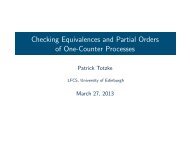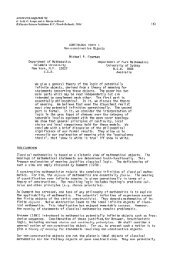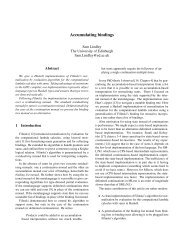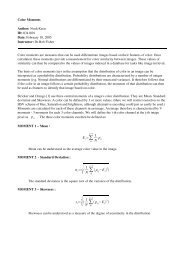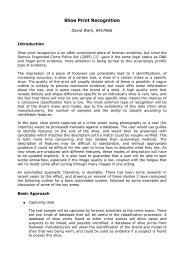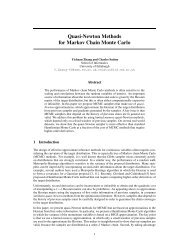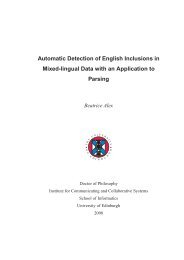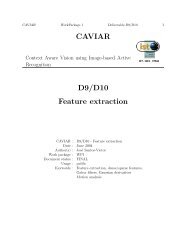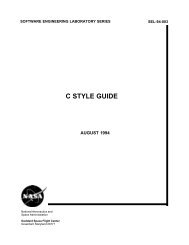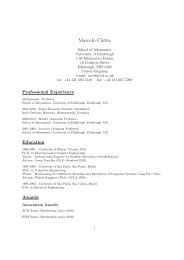View - School of Informatics - University of Edinburgh
View - School of Informatics - University of Edinburgh
View - School of Informatics - University of Edinburgh
You also want an ePaper? Increase the reach of your titles
YUMPU automatically turns print PDFs into web optimized ePapers that Google loves.
3 Sequence Spaces<br />
In this section we will study the sequence spaces<br />
with the norms<br />
in case <strong>of</strong> 1 ≤ p < ∞ and<br />
l p := {x ∈ F N : ||x|| p < ∞}<br />
√ √√√<br />
∑ ∞<br />
||x|| p := p |x i | p<br />
i=0<br />
||x|| ∞ := sup |x i |<br />
i∈N<br />
in case <strong>of</strong> p = ∞ for all x = (x i ) i∈N , as they are known in functional analysis.<br />
One important duality property <strong>of</strong> these spaces is expressed by the following<br />
theorem (see, for instance, Theorem II.2.3 in [9]):<br />
Theorem 2 (Landau). Let p,q > 1 be real numbers such that 1 p + 1 q = 1 or<br />
p = 1 and q = ∞. Then the map λ : l q → l ′ p,a ↦→ λ a with λ a : l p → F,<br />
(x k ) k∈N ↦→ ∑ ∞<br />
k=0 a kx k is an isometric isomorphism. The map λ is also isometric<br />
in case <strong>of</strong> p = ∞ and q = 1.<br />
The pro<strong>of</strong> is mainly based on Hölder’s Inequality. It is known that the fact<br />
that λ is an isomorphism cannot be generalized to the case p = ∞ and q = 1<br />
straightforwardly, since the result depends on the underlying axiomatic setting<br />
in this case. On the one hand, using the Hahn-Banach Theorem one can extend<br />
the limit functional lim : c → F on the space <strong>of</strong> convergent sequences c to a<br />
functional L : l ∞ → F with the same norm and it is easy to see that this<br />
functional cannot be represented as λ a with some a ∈ l 1 . Thus we obtain the<br />
following classical property <strong>of</strong> the map λ defined in Landau’s Theorem (see, for<br />
instance, Theorem II.1.11 in [9]):<br />
Theorem 3. In ZF+AC the map λ : l 1 → l ′ ∞ is not surjective.<br />
Thus, one could say that l ′ ∞ is a proper superset <strong>of</strong> l 1 . On the other hand,<br />
Pincus proved a result, first stated by Solovay, which shows that the situation<br />
changes if we replace the Axiom <strong>of</strong> Choice by Dependent Choice and the Baire<br />
Property (see 29.37 in [5]):<br />
Theorem 4 (Solovay, Pincus). In ZF+DC+BP the map λ : l 1 → l ′ ∞ is an<br />
isometric isomorphism.<br />
The Theorem <strong>of</strong> Landau and its counterpart for the case p = ∞ and q = 1<br />
have certain consequences concerning the existence <strong>of</strong> compatible representations<br />
<strong>of</strong> the sequence spaces. As a preparation we prove a characterization <strong>of</strong> weak convergence<br />
for these spaces. We recall that in functional analysis weak convergence<br />
means convergence with respect to the weak topology, i.e. a sequence (x n ) n∈N<br />
in a normed space X is said to converge weakly to x, if (f(x n )) n∈N converges to



